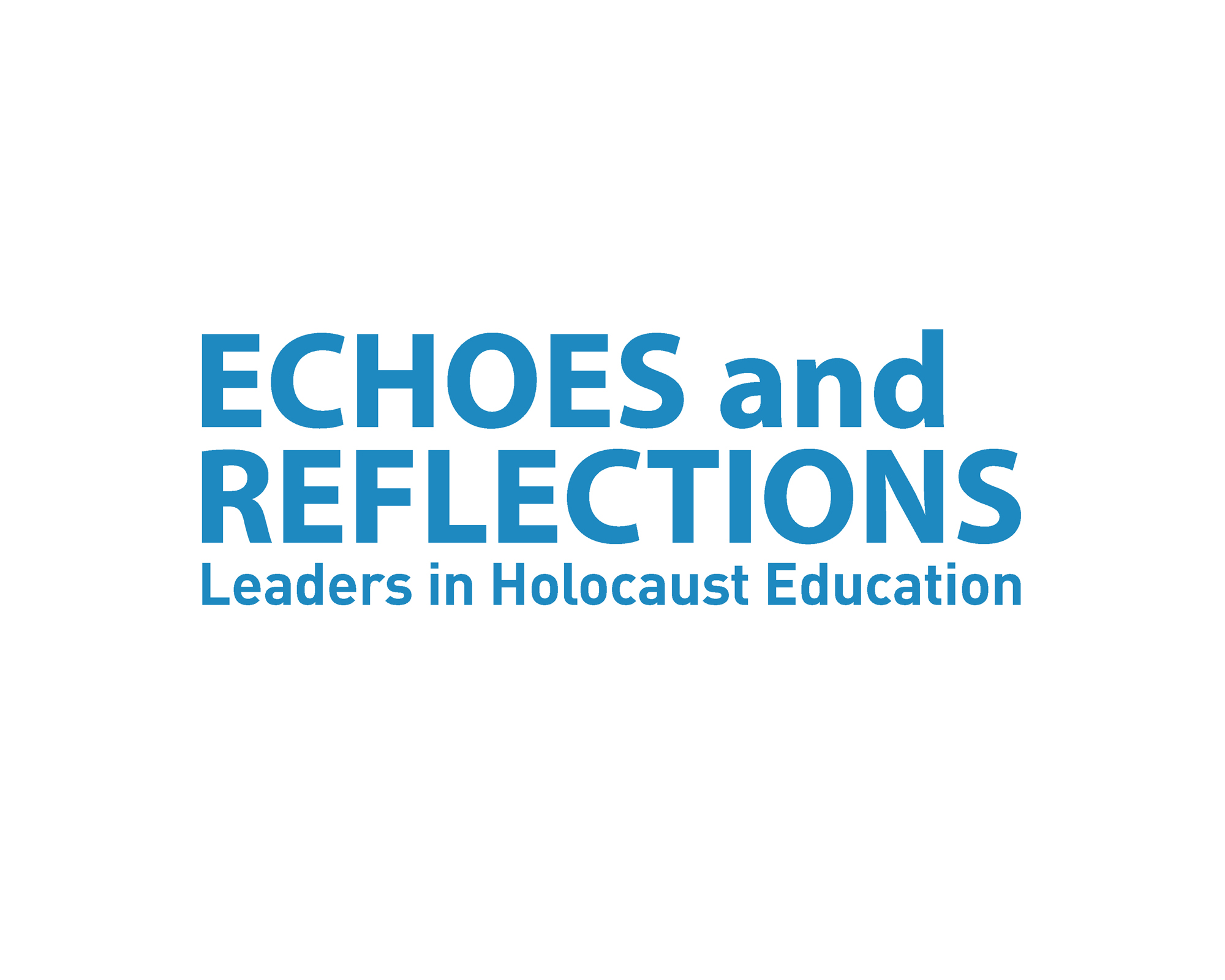Back to School with Echoes and Reflections - Part 3

Today continues a 10-part series called “Back to School with Echoes and Reflections.” Each installment takes a detailed look at one of the 10 Echoes and Reflections lessons.
Echoes and Reflections is a multimedia professional development program for secondary school teachers in the United States that provides them with accurate and authentic Holocaust information for their classrooms. Programs are held around the country at no cost to teachers or schools, and participants receive a complimentary copy of the 10-part Teacher’s Resource Guide that equips them with the tools they need to help today’s students study the Holocaust as a significant event in human history.
Echoes and Reflections combines the resources and competencies of t hree world leaders in education―the Anti-Defamation League’s experience in curriculum and professional development, access to USC Shoah Foundation’s Visual History Archive of survivor and witness testimonies and digital educational tools, and Yad Vashem’s historical expertise and primary source materials―resulting in the most comprehensive Holocaust education program available.
Echoes and Reflections includes everything educators need to teach the complex issues of the Holocaust. Each lesson within the Echoes and Reflections Teacher’s Resource Guide explores a different aspect of the Holocaust and encourages students in grades 6-12 to build an authentic and comprehensive portrait of the past as they frame their own thoughts, resulting in a deeper level of interest and inquiry.
The modular design of the Echoes and Reflections Teacher’s Resource Guide includes photographs, literature, artwork, diary entries, government documents and other primary source materials that teachers may easily photocopy and distribute to students. Lessons also incorporate testimony from USC Shoah Foundation’s Visual History Archive on DVD Each lesson addresses Common Core State Standards, and each one has been integrated into IWitness. IWitness is USC Shoah Foundation’s educational website that provides students and teachers access to more than 1,300 full life histories and testimonies of survivors and witnesses to the Holocaust and other genocides from the Visual History Archive for guided exploration, multimedia projects, activities and lessons.
To date Echoes and Reflections has prepared almost 20,000 educators and community leaders across the United States to use the Teacher’s Resource Guide effectively. Teachers interested in more information about Echoes and Reflections should contact echoes@adl.org.
Lesson 3: Nazi Germany
Students begin Lesson 3 by watching testimony in which Holocaust survivors talk about the political culture of Germany before the rise of the Nazi Party. The survivors discuss the Weimar Republic and the “insecure situation” Germany descended into after its defeat World War I. Students read the handout The Weimar Republic and the Rise of the Nazi Party and discuss the factors that led to the Nazis’ rise to power – and the fragility, as well as the benefits, of democracy.
The next set of testimonies that students watch cover the Nuremberg Laws and how the survivors’ lives changed once the Nazis’ restrictions against Jews began to take effect. Teachers encourage students to think about how they would feel if their rights were taken away by assigning them the What Rights Are Most Important to Me? handout, in which students rank the nine choices – date/marry whomever you choose, vote, eat what you want, live in a neighborhood of your choice, etc. – from most to least important to them. Students also watch testimony and discuss photos of the Kristallnacht pogrom.
The final part of Lesson 3 is titled “Pyramid of Hate.” The Echoes and Reflections handout Pyramid of Hate categorizes different types of hate that can be perpetuated against individuals and groups. At the top of the pyramid is the most severe kind, Violence, followed by Discrimination, Acts of Prejudice, and Prejudiced Attitudes. Students identify examples of the different levels of hate that they have heard in the testimonies and handouts.
The Pyramid of Hate activity provides the inspiration for a class discussion about what leads individuals and governments to perpetuate discriminatory practices and why most people did not speak out about what was happening in Germany. Students consider the responsibility non-Jews had to oppose the government’s actions and the harm their failure to act had on themselves and society as a whole.
To integrate IWitness into Lesson 3, teachers have several options. They can use testimony clips and encyclopedia articles in IWitness about Reverend Martin Niemoller, whose quote about not speaking up is a suggested discussion topic in Lesson 3. They can also show clips about Kristallnacht or survivor Roman Kent’s testimony in which he talks about his beloved family dog, to demonstrate how the loss of rights affects children.
Next week – Lesson 4: The Ghettos